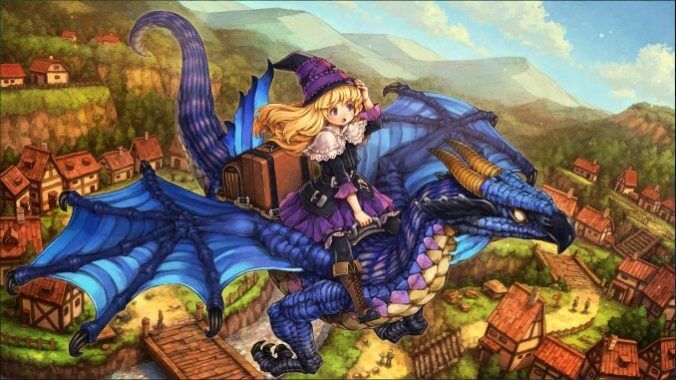GrimGrimoire‘s Spellbinding Remaster Is a Testament of Vanillaware’s Growth

Vanillaware has always been a group of misfits. Formed in 2002 by George Kamitani, his Starcraft buddy Kentaro Ohnishi, and doujin developer Shigetake, the goal of Vanillaware was to make games on their own terms, freely experimenting and taking inspiration from RTSes, beat-em-ups, and the Atelier series. Kamitani previously had negative working relationships with both Sega and Enix (who were in the midst of their merger with Square), effectively blacklisting him and his future projects from being anything but self-produced. After the trio’s frustrated experience working on Square Enix’s MMO Fantasy Earth: The Ring of Dominion, they corralled former Atlus employees to work on Odin Sphere, Kamitani’s white whale that was intended as a spiritual successor to Princess Crown, the game that nearly ruined his career.
Though Odin Sphere was their first project and the entire reason for Vanillaware’s inception, GrimGrimoire was their first actual release. GrimGrimoire was a commission from Nippon Ichi Software’s then president Sohei Shinkawa, who, being a fan of Princess Crown, essentially gave Kamitani complete creative control to produce whatever he wanted. Vanillaware united over their already established love of Starcraft to craft a short, stylish, and mechanically deep console RTS, a genre that has almost always made its home on PCs. They would have to make an entirely new type of RTS, one that could not be so easily compared to its keyboard-and-mouse cousins.
GrimGrimoire takes place in a whimsical, sweetly gothic world of magic and spells. Instead of building tanks or recruiting vikings, the player takes on the role of a novice magician named Lillet Blan, who can summon fairies, ghosts, and demons with runes. GrimGrimoire doesn’t have a top-down aesthetic, nor does it have a way to accelerate time. Instead, GrimGrimoire is structured as a series of visual novel segments that lead into discrete levels, viewed horizontally, where you have an explicit goal, such as annihilating all an enemy’s runes or surviving a 20 minute onslaught. Though your options are limited when compared to a game like Starcraft, the brevity of each level and complex stacking of match-ups and abilities between summonable familiars means you can approach each level differently, replay them to find more efficient means to succeed, and experiment with options as you go.
Like Odin Sphere, GrimGrimoire had its noticeable flaws at release. Common criticisms were leveraged against the game’s basic interfacing, which were seen as clunky given the restrictions of using a controller or the lack of saving mid-battle. Others found the battles grew repetitive given the lack of variation once you have every grimoire unlocked. Unlike Odin Sphere, though, GrimGrimoire underperformed and led to Kamitani having to take out a sizable personal loan to save Vanillaware. On paper, GrimGrimoire was a failure. But it also led directly to Vanillaware’s greatest success.
Originally, GrimGrimoire was planned to be divided down the middle into adventure game segments with full exploration and the RTS levels that were eventually included. Due to time and money constraints, the game took on a more visual novel-esque shape, which, while gorgeously rendered, does limit the scope of the game considerably. This would be an idea Vanillaware would revisit over a decade later. Perhaps due to Odin Sphere’s success, Vanillaware leaned into RPG/beat-em-up hybrids over the next several years, such as the Wii game Muramasa: The Demon Blade and the arcade-y multiplayer side-scroller Dragon’s Crown (which was heavily inspired by Dungeons & Dragons: Towers of Doom, which Kamitani himself worked on). They found some success and notoriety in doing so, but their games have always been sleeper hits—Dragon’s Crown didn’t sell its millionth unit until 2017, four years after its initial release.